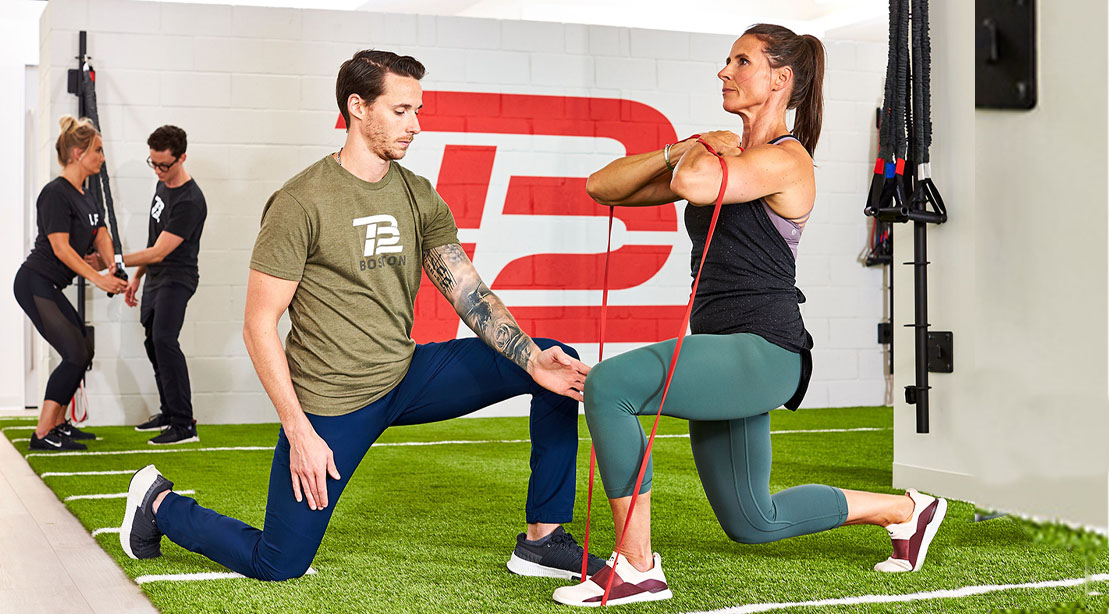[ad_1]
There’s no getting around it, passing the four-decade mark is an intriguing time. Sure, we may have worked our way up the career ladder, hopefully starting to enjoy a bit more security and stability, but an accumulation of aches and pains, not to mention dipping energy levels, serves to remind us that we are no longer teenagers. Still, with the likes of Tom Brady (44), Tiger Woods (46) and Kelly Slater (48) still wowing the critics, many experts are taking a keen look as to why there seems to be a greater likelihood of longevity for the mature athletes.
M&F talked to Matt Denning, who holds a Bachelor of Science in Applied Exercise Science, and a Doctorate of Physical Therapy, to understand why so many athletes are still able to hang with their younger counterparts after age 40, and what we may learn from their successes in order to hold back the hands of time for ourselves.
Mature Athletes Own an Extended ‘Training Age’
“Mature athletes often have what we call an improved or extended ‘training age,’” says Denning, who is also a TB12 Head Body Coach. “This means that their movement patterns have been engrained for a significant period of time, allowing them to excel in their activity of choice.”
Inspired by the training method of seven-time Super Bowl champion Tom Brady, co-founded with his long-time body coach Alex Guerrero, TB12 delivers personalized programming that is taught by professionals to athletes of all levels.
“Another advantage is that mature athletes can have a better grasp on nutrition, sleep, hydration, and mindset,” adds Denning. “Mature athletes tend to focus on their long-term health versus their short-term successes, often times leading them to place a larger emphasis on their recovery.” TB12 was developed by Brady and Guerrero in large part to break the cycle of the legendary quarterback’s own injury setbacks. The duo found that keeping muscles pliable was a great way to prepare the body for intense sporting activities. So how can we stay fit over 40?
Mature Athletes Keep Muscles Pliable for Optimum Performance
“Achieving optimal movement patterns is an essential first step before increased load is applied,” shares Denning. “We emphasize the importance of pliable tissue as it allows us to ensure proper form and dissipate the forces correctly to minimize the chance of injury. If increased weight or load is applied to tissues or joints that are not moving optimally, dysfunction can continue to develop and prevent an optimal mind-body connection, thus increasing the chance of injury, and decreasing performance levels. Pliable tissue allows for better vascularization, nerve conduction, and force distribution.”
Indeed, staying active as we age requires us to take responsibility for a wide range of factors, and we should be proud to place greater emphasis on our hard-earned experience and technique. “While many might feel like they should push harder in the gym to keep up with the younger crowd, older athletes should be more concerned with their longer-term goals and their recovery routine,” advises Denning. “Regardless of age, movements should not simply be replicated without instruction as it is important to focus on longevity when considering which routines and lifestyle choices are the best fit.”

Better Lifestyle Choices Make for Greater Recovery
“We can maximize our recovery and amplify our pliability by focusing on improved hydration, nutrition, sleep, and mindset,” says Denning, who points out these simple ways to help ensure adequate recovery:
- Consume at least half of our body weight poundage in ounces of water each day
- Limit alcohol and caffeine consumption
- Eat a plant based and seasonal diet; avoid highly processed foods
- Sleep 7-9 hours per night to allow the body to optimize the healing process
- Focus on achieving a growth mindset and a positive outlook
Focus on Low Impact Activities
“Supplementing non-impact or low impact activities such as swimming should be considered as we age,” says Denning. “Like most things, it’s about finding a balance between higher impact activities such as running or jumping and lower impact activities such as walking or resistance band training. For healthy individuals, it’s important to maintain some level of impact activity to promote an adequate level of bone density and tendon health. If higher impact activities are not well tolerated due to bone or tendon conditions, activities such as swimming or biking should be considered.”
Eat the Rainbow
We all know that beige is blah, so be sure to include as many colors on your plate as possible. “As we age, it’s important to ‘eat the rainbow’ and limit your intake of the ‘5 W’s’ (Wheat, White Flour, White Liquids (Dairy), White Carbohydrates, White Sugar),” says Denning. “Since doing so will have an anti-inflammatory effect on the body and allow for more optimal cognitive and physical function. Maintain a higher protein diet along with resistance training or impact exercise, as tolerated, to help ensure that lean body mass is maintained as we age. A supplement such as TB12 Recover can be useful to help support a healthy inflammatory response, muscle recovery, and joint mobility. A daily multivitamin can also be helpful in ‘filling gaps’ that are missed in our diet although it is optimal to obtain the necessary vitamins and minerals from our food intake. Limiting or avoiding pro-inflammatory foods and drinks such as fried foods and alcohol will help eliminate unnecessary calories and place the body in an advanced state for performance.”
Train Smarter Not Harder
“At TB12, we make an effort to not be defined by things such as age,” says Denning. “It’s far more critical that people are sensible in how they train. They may not need to train less days per week, but a reduced volume of time or reduced intensity may be exactly what is required. People can train smarter and longer by knowing when to ‘push on the gas or push on the brake’. Finding the right volume and intensity can be unique for each person so listening to your body after workout sessions can be a helpful indicator.
“Don’t let age define activity level or mindset! Age is just one piece of the puzzle as we consider activity level, exercise selection, and intensity of movement. Working with a qualified health-care professional, such as a TB12 Body Coach, who can guide appropriate exercise will help provide long-term success relative to diminishing the risk of injury and improving performance!”
There’s still life in us old dogs.
[ad_2]
Source link

